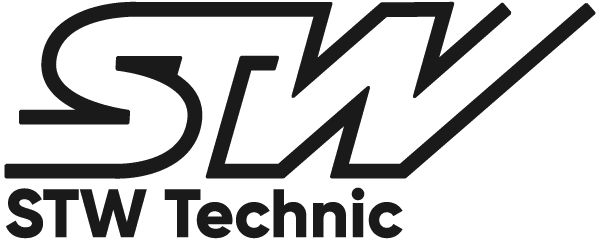August 23, 2023

The industrial landscape has been continuously evolving, and so too has the technology that drives it. HMI (Human-Machine Interface) Display Technology is a critical component that allows operators to interact with their machinery. In this post, we will delve into the history, the current state, and what the future might hold for display technology in the fields of agriculture, construction, energy, and logistics and transportation.
Past Display Technologies
Cathode-ray tube (CRT)
The CRT was one of the earliest types of electronic display technologies. Utilized in some heavy machinery during the latter half of the 20th century, CRTs offered a way to visually represent data and controls but were bulky and consumed more energy.Vacuum Fluorescent Display (VFD)
VFDs provided a bright and crisp display, especially effective in low-light conditions. They were popular in various heavy equipment like cranes and excavators during the ’80s and ’90s, but the complex structure, limited color capabilities, and overall energy demand led to a decline in use.Super-twisted Nematic (STN)
STN technology was an evolution of the liquid crystal display and offered a more lightweight and energy-efficient solution. While used in some mobile machinery, its relatively slow response time and limited viewing angles made it less favorable in comparison to newer technologies.Present Display Technology
Introduction to Thin-film-transistor (TFT)
Thin-film-transistor technology, commonly known as TFT, is a form of liquid-crystal display (LCD) that leverages tiny transistors to control the illumination of pixels. The importance of TFT technology in today’s mobile machinery and heavy equipment cannot be overstated, as it offers vibrant color reproduction, faster response times, and energy efficiency as seen in our full line of inSIGHT displays.Applications in Agriculture
In the agriculture industry, TFT displays are often used in tractors, harvesters, and other machinery to provide operators with real-time data and controls. These panels offer essential information like soil conditions, GPS mapping, and equipment diagnostics – among other market solutions, enabling farmers to make informed decisions and operate machinery more effectively.Utilization in Construction Industry
Construction sites are leveraging TFT displays on HMI devices used in various equipment like excavators and cranes. These screens help operators monitor performance, manage complex tasks with precision, and provide enhanced safety features. The clear and responsive visualizations aid in efficiency and accuracy on construction sites.Utilization in Logistics & Transportation
TFT technology is widely used in logistics and transportation. In trucks, ships, and railways, TFT screens offer navigation, monitoring tools, and interactive controls that enhance safety and efficiency. From tracking shipments to managing complex routing, TFT displays provide the necessary visual interface that supports the intricate logistics network.Challenges and Ongoing Developments
While the adoption of TFT technology has seen significant success, it is not without challenges. The demand for higher resolution, improved touch capabilities, and durability in extreme conditions is ever-present. Luckily, manufacturers are addressing these challenges by investing in research and development, driving innovations in material science, and implementing new manufacturing techniques. This continuous improvement ensures that TFT technology remains at the forefront of these industries and continues to provide machine data at a glance to their operators in the field. By meeting the unique requirements of diverse industries, TFT displays have become an essential aspect of modern mobile machinery and heavy equipment. Its ability to translate complex data into understandable visuals empowers operators to perform tasks with greater accuracy and efficiency. The ongoing developments promise to further refine and enhance TFT technology, solidifying its place as the present and near future of industrial display technology.Future Display Technologies
Next-gen Thin-film-transistor (TFT)
Technological Advancements
Next-generation TFT displays are expected to leverage advancements in materials and manufacturing techniques. With the introduction of novel materials like organic semiconductors, next-gen TFTs are moving towards offering higher resolution and increased energy efficiency. This evolution holds the promise of even more robust performance, particularly in the demanding environments of all mobile machine sectors.Potential Applications
The potential applications of next-gen TFTs in industries like agriculture, construction, and logistics & transportation are numerous. Enhanced color accuracy and faster response times will allow for more precise control and visualization in heavy machinery. Whether it’s for more in-depth real-time monitoring of equipment on farm fields or more advanced control systems needed on construction sites, the improvements in next-gen TFT technology will elevate the HMI user experience.Challenges and Expectations
Despite the promising future, there are still challenges to overcome. The development of these advanced displays requires significant investment in research and new fabrication techniques. However, as the technology matures, it is expected to become more accessible, meeting the specific needs of various industrial applications and setting new standards for display technology in mobile machinery and heavy equipment.MicroLED
What is MicroLED?
MicroLED is an emerging display technology that utilizes microscopic light-emitting diodes to create individual pixels. Offering exceptional brightness, energy efficiency, and a longer lifespan compared to current technologies, MicroLED is seen as a groundbreaking advancement that could reshape the way we use displays in industrial applications.Potential in Heavy Machinery and Mobile Equipment
The potential of MicroLED in heavy machinery and mobile equipment is immense. Its ability to deliver ultra-clear visuals in various lighting conditions makes it suitable for outdoor applications, such as in cranes or agricultural machinery. Moreover, the inherent durability and energy efficiency of MicroLED make it well-suited to the demanding conditions found in construction, energy, and logistics sectors. And unlike technologies such as OLED, the risk of screen burn-in is avoided and heat output is significantly reduced.Looking Forward: Challenges and Opportunities
MicroLED is still in its infancy and faces challenges related to manufacturing complexity and cost. Yet, the technology holds the promise of revolutionizing display interfaces in various industries, including those discussed here. Continued investment in research and development, coupled with collaboration between tech giants and specialized industrial manufacturers, may pave the way for MicroLED to become a standard in the near future.Conclusion
The journey of display technology through a multitude of mobile machine markets and across the general electronics industry has been remarkable. From the bulky CRTs to the sleek and efficient TFT displays, the evolution is a testament to human ingenuity and the drive to improve. As we look towards the future, innovations like next-gen TFT and microLED are giving us a glimpse of what the future might hold for a new era of interaction between operator and machine.Looking for displays?
Learn more about our inSIGHT displays and make the next-generation upgrade on your mobile machines – today.
Explore More
About STW Technic
STW Technic is an innovative leader in the design, manufacture, and implementation of electronic solutions for mobile machines and off-highway vehicles. We partner with machine manufacturers, system integrators, and distributors to provide engineered and highly reliable connectivity, automation, and power management solutions to truly empower their mobile machines. We offer the latest in Mobile Machine IoT hardware and software solutions, such as our market-leading remote asset management platform – Reach. We also provide solutions such as openSYDE – our systems configuration tool – to support the entire lifecycle of your machine.
